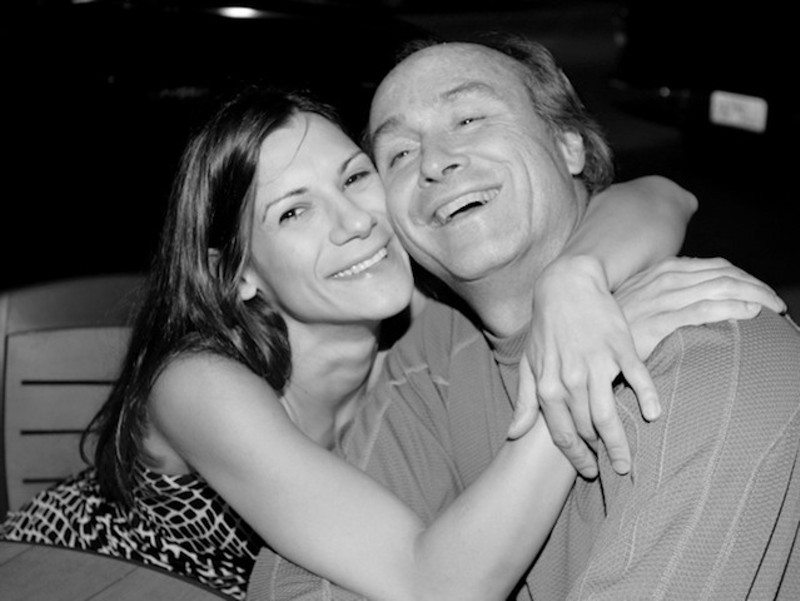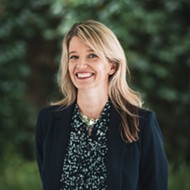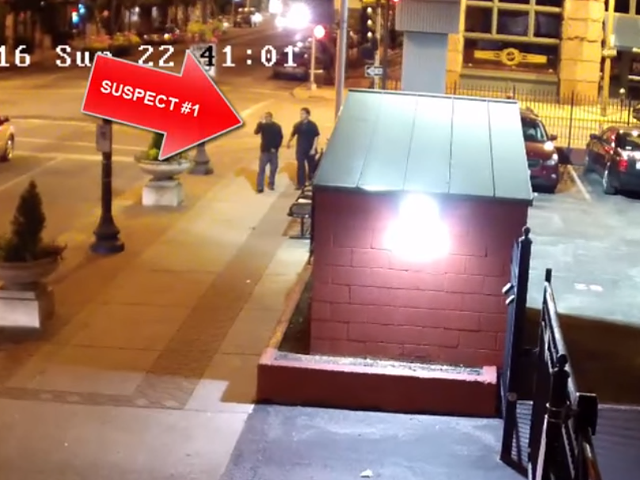
Nearly five years after St. Louis artist and City Museum founder Bob Cassilly died in what police termed a bulldozer mishap, his widow is speaking out, saying she's become convinced his death was not an accident.
Giovanna Cassilly, who'd been married to the prolific artist for seven years at the time of his death, has been working with attorney Albert Watkins to persuade law enforcement to reopen the case. Watkins confirms they have spoken with the FBI and are also seeking the involvement of the St. Louis County Police Department's major case squad.
Giovanna believes that a cursory investigation on the part of local law enforcement failed to get at the truth of what happened to her husband — and that a series of strange events, including an earlier incident where he was beaten up, as well as a subsequent fire that appears to have been deliberately set — may be connected. She's begging anyone with information to step up.
"I do believe someone is going to come forward with substantial information," she says. "People know things, but no one has had a place to go. I had no place to go! This has been on me, eating me alive. And I want to encourage anyone who has seen any kind of suspicious actions — to call. As silly as they may think it is. Please call. Please come forward.
"People have information, and that's all I want."
The noted sculptor was found in his bulldozer on Monday, September 26, 2011, around 8 a.m. The grisly discovery was made by a member of Cassilly's crew who had reported for work at Cementland, Cassilly's unfinished 56-acre masterwork along the Mississippi River north of downtown. His body was slumped in the cab of the upright dozer as it rested on the hillside. From a distance, a neighbor recalls, it looked like he was napping, or had fainted.
Giovanna Cassilly had been in Los Angeles for the weekend, and she'd started worrying when her husband failed to meet her parents for a planned hand-off of their two young sons on Sunday. She'd tried calling, tried texting. Nothing.
That Sunday evening, increasingly alarmed, she called their neighbor and asked her to go look at Cementland. The neighbor (who asked that her name not be used) tells the RFT that she vividly recalls standing at the gate. It was dark and rainy; there was no sound of Bob's bulldozer, and the gate was padlocked.
Nothing, she reported back. He's not there.
The next morning Giovanna began calling again, this time asking her husband's crew members if they could look for him on the property. What they found was her worst fear: Her husband was dead. Within hours, the media would report there had been an accident, the result of a bulldozer rollover that had apparently sent the machine tumbling down a steep hill, fracturing Cassilly’s skull.
Everything that followed was a blur, a terrible period of mourning even in the midst of legal chaos. Because Bob Cassilly died with no will and an exceptionally complicated estate (part ownership in the City Museum and full ownership of Cementland; two kids from a previous marriage, plus a wife and two more kids), years would follow in probate court — years of stress and great sadness.
It was only after a fire ravaged the work garage at Cementland where her husband's art was kept, and only in the midst of the chaos of Ferguson, that Cassilly’s widow found herself jolted to everything that had been nagging at her, subconsciously, for years.
How had her husband, an experienced operator of heavy machinery, somehow sent a 32,585-pound bulldozer tumbling over and over with such velocity that it landed almost fully upright — not throwing him from the machine, but still killing him?
Why had no one in law enforcement ever even asked her about all the strange events of that summer of 2011?
And how was it possible that Cementland's gates were locked the night before her husband's body was found? When Bob was working he never locked himself in, as crew members confirm to the RFT; his hands were too big to reach around from the inside and unlock the gate. Instead he would set the padlock so it looked closed, but wasn't.
And yet their neighbor, who knew the difference, was sure it had been locked that Sunday. Had someone else been at Cementland that Saturday or Sunday? Did that someone lock the gate behind them?
“It all hit me at once,” Giovanna says. “This was no accident.”
At that point, in the summer of 2014, Giovanna first got in touch with the FBI. When they contacted her to say they were opening an investigation, she asked them to repeat what they'd told her: “I just want to make sure I heard that right.” Hearing it a second time, she sank to the floor.
“I don't think I've ever felt anything like this,” she says. “I felt complete happiness, complete sadness — I was laughing and crying. I felt like Bob had tackled me to the ground.
“It was the best feeling of the most intense pain I've ever felt. I thought, 'Oh my God, I did the right thing.' And I've been waiting since then.”
Turn the page for more. Warning: Pages three and four of this story include images from Cassilly's death scene.






